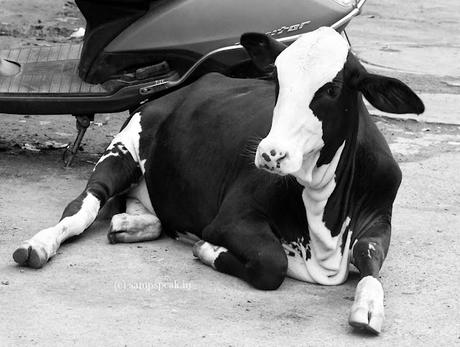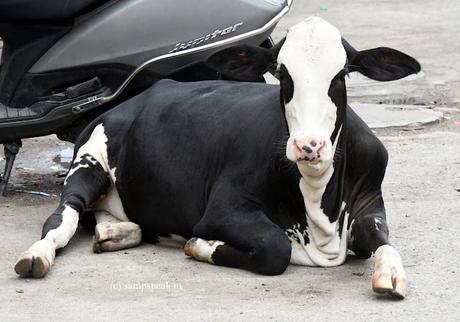Picture speaks words ! - Life is all about perceptions – there are 2 photos of the same cow one below the other – what strikes you ??


Whether GoAT is a hit or not, the debate may take time to dye ! modern day films are multicrore business and most times people are the loser. Much before the present day heroes of Vikram, Vijay, Ajit and more – there was Ranjan. Born Ramanarayana Venkataramana Sarma in 1918, Ranjan was a college-educated, classy gentleman who came closest to Hollywood’s Errol Flynn and Ricardo Montalban rolled into one. Those of us in our Seventies and Eighties now were totally enamoured of him during our teenage years. Such was his presence, demeanour and charisma. His wrestling tigers and lions only added to his magnetism.
In one of his hit films, the storyline was very simple. A nobleman, Raja, is robbed of his birthright by an army commander who happens to be an enemy of his dead warrior father. When the Princess of Malaya, Chitralekha Devi, arrives in India for a visit, the two fall in love. The jealous commander imprisons Raja. But he escapes and sails to Malaya with Chitralekha on her ship. After much confrontation with the relentless and ruthless commander, Raja triumphs and marries Chitralekha. Raja Malaya Simha directed and produced by B. S. Ranga was released in 1959 in Tamil &Telugu.
Tamil tinseldom has a long and cherished history. The first South Indian talking film was released on Sept 15, 1931. H.M. Reddy produced and directed Bhakta Prahlada (Telugu). This was followed by Kalidas (Tamil). Electric Theatre was the first purpose-built theater. It was built in 1900 for movie screening on Mount Road by an Englishman called Warwick Major. Keechaka Vadam – the first South Indian silent movie eleased in 1918, marked the birth of South Indian cinema. It was the first Madras production.
Bhaktha Chetha directed and produced by K. Subrahmanyam released in 1940 featured Papanasam Sivan as the titular character with G. Subbulakshmi, Kothamangalam Subbu, S. R. Janaki and Master R. Thirumalai playing supporting roles. This is known to be the earliest Tamil film to have scenes in color. This process colourises film shot originally in black and white by colouring the negatives frame by frame.
Then the industry saw ‘Keva colour’ !! - Gevacolor is a color motion picture process. It was established in 1948, originally based in Belgium and an affiliate of Agfacolor. The process and company flourished in the 1950s as it was suitable for on location shooting. Gevacolor made its debut in Tamil cinema through the film Kalyaanam Pannippaar, a 1952 Indian bilingual Tamil-Telugu satirical comedy film directed by L. V. Prasad and produced by B. Nagi Reddy and Aluri Chakrapani under their company Vijaya Vauhini Studios As it’s name suggests, the processed negatives exhibited an orange color “mask”, much like a Kodacolor negative.
Then came ‘Eastman Colour’ - a trade name used by Eastman Kodak for a number of related film and processing technologies associated with color motion picture production and referring to George Eastman, founder of Kodak. Eastmancolor, introduced in 1950, was one of the first widely successful "single-strip colour" processes, and eventually displaced the more cumbersome Technicolor. Raja Malaya Simha – was the first movie in Eastman color.
Though on Pongal 1975 day, we saw India Vs West Indies live on Television – it was broadcast in B&W with a single camera, ie., they showed Madanlal running into us and in the next over Karsan Ghavri running away from us. Doordarshan moved to color broadcast on Independence day 1982 with the then PM Mrs Indira Gandhi addressing the Nation.
Pic 1 at the start is a B&W image while the 2nd is a color one. Technically, Black is the absence of light. Unlike white and other hues, pure black can exist in nature without any light at all. Some consider white to be a colour, because white light comprises all hues on the visible light spectrum.
Thanks for reading till the end, know that it is time to hit the bed for many!
With regards – S Sampathkumar6.9.2024

